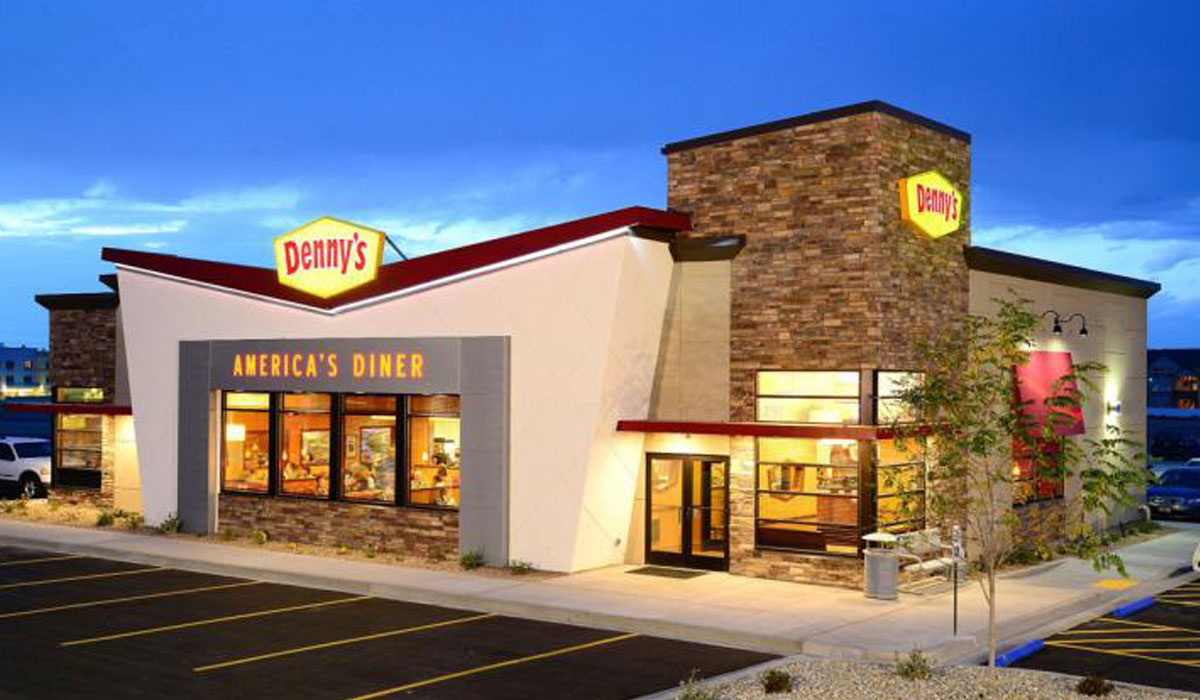Denny’s is entering the final phase of its refranchising strategy, and could be buyers when it’s done. During the third quarter, 56 stores were sold to franchisees, with an additional six planned for the fourth quarter. This brings the total to 110 since the initiative rolled out a year ago, Denny’s chief executive John Miller said during the brand’s quarterly review on October 29.
Denny’s expects to finish when it hits somewhere between 115-125 stores sold. The deals brought $70 million in Q3 profit for Denny’s. Proceeds are expected to reach between $125 and $135 million, chief financial officer Mark Wolfinger said.
This means Denny’s has cash on hand and might be willing to spend it. Investing some of it back into the brand is one clear choice, but the company is also considering the acquisition of another concept, Miller said. A similar transaction, like the brand’s conversion of restaurants in Flying J, could be a possibility. In 2010, Denny’s offered franchisees the opportunity to convert restaurants at the truck stop chain at a cost of $565,000 per unit.
“We remain steadfast, however, in our commitment to increase our leverage moderately and then generate the most accretive, risk adjusted shareholder returns through the timing and prudent assessment of these alternatives,” Miller said.
As Denny’s transitions into a more asset-light business model, it will focus on strategies that enhance the brand, including menu development, convenience, and remodeling.
“Many franchisees have expressed their support for the returns on quality investments that we are making to continually improve our food, our service, and our atmosphere,” Miller said.
Same-store sales lifted 1.1 percent in Q3. Franchise locations saw a 1.2 percent increase, while company-owned stores dipped 0.2 percent (1,629 of Denny’s 1,706 units are franchised). Sales at corporate locations were impacted because of the refranchising push, Wolfinger said.
Refranchising, though, isn’t the only strategy Denny’s has leveraged lately to expand its reach. The company opened 13 new franchises in Q3. At the end of period, Denny’s had 75 locations in development, Wolfinger said.
The brand is taking advantage of the increased cash flow to invest in the dining experience. Franchisees completed 31 remodels to Denny’s “Heritage” design during Q3, bringing the total refresh to 87 percent of the system.
“Our heritage remodel program continues to perform well, and consistently receives favorable guest feedback,” Miller said. “This enhanced diner environment will continue to provide a significant tailwind for our brand revitalization strategy over the next several years.”

Off-premises made up 11 percent of total sales during the third quarter.
Wolfinger expects the remodel costs and other expenditures associated with maintenance to rest between $9–10 million a year. The costs will decrease as the brand transitions.
Denny’s is also searching for new real estate to improve the quality of its portfolio. The sale of 23–29 locations will generate about $30 million in proceeds, Wolfinger said. Those earnings will be redeployed to acquire higher-quality properties. While the refranchising strategy will wrap up in early 2020, Miller expects the upgrades to continue throughout 2020.
Slow and steady off-premises growth
In order to expand the company’s off-premises channel, Denny’s is increasing brand awareness to attract younger guests. Off-premises made up 11 percent of total sales in Q3. Delivery remains the big driver. About 88 percent of the system interacts with at least one third-party service. Miller thinks the brand can get that number up to the mid-90s over time.
The sales segment is up from 7 percent when Denny’s On-Demand launched in mid-2017. There is still room to grow, but the brand isn’t forcing the issue. Denny’s sees 1–1.5 percent lift year-over-year, Miller said. He suspects the brand could reach the middle to upper teens before reaching its limit.
“To drive it beyond that might mean your business model has altered more than you want to,” Miller said. “We are not necessarily pushing to get there at some accelerated rate, but rather you watching the margins and the investment and the complexity and as technology improves.”
Integrated technology that doesn’t need multiple devices to run on is the future of Denny’s off-premises strategy. The less complicated the process is, the less likely a customer will end up with a wrong order or where an order gets lost completely. High-volume locations that have proper staffing are able to juggle delivery orders with ease. Locations with staffing issues run into delivery problems at peak hours, Miller said.
“The stores that are good at it manage multiple devices sort of teaching the rest of the system how to do it and the adoption rate has sort of stepped up with every passing quarter,” Miller said.








